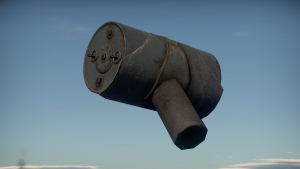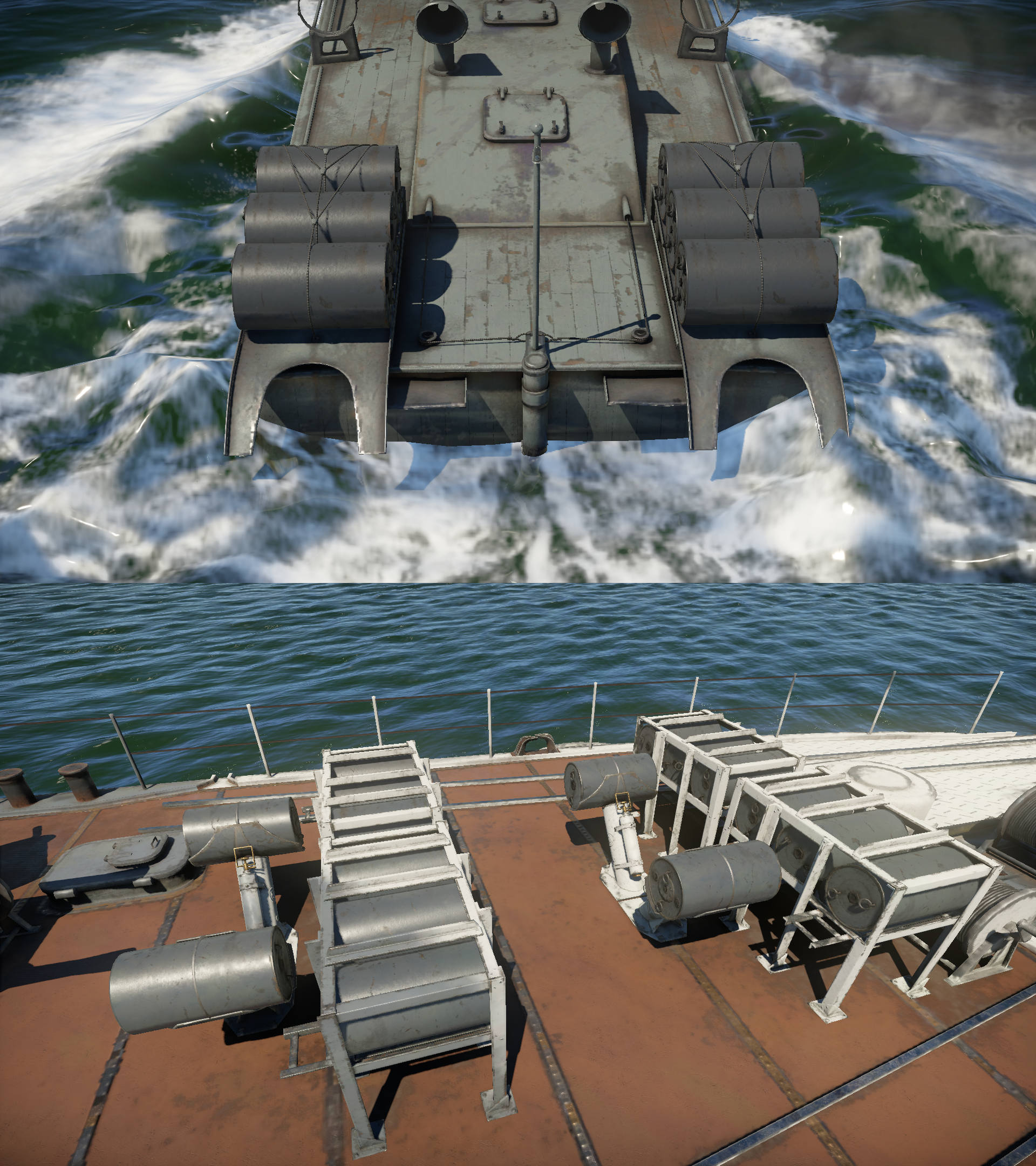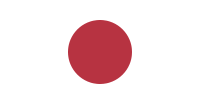Type 95 depth charge
Contents
Description
The Type 95 depth charge is a common depth charge found on many Japanese WWII patrol boats, sub chasers, destroyers, and the light cruiser IJN Kuma. Depending on the particular vessel, it can be dropped from stern racks or launched with a depth charge thrower; both options are also available on certain vessels.
Vehicles equipped with this weapon
| Vehicles equipped with this weapon | |
|---|---|
| Motor gun boats | Ha-Go (mod. 1) · Type 5 |
| Motor torpedo boats | Type T-51b · Type T-1 · Type T-14 · Type T-14 (mod. 1) · Type T-38 |
| Sub-chasers | Syonan · Type 4 (mod. 2) · Type 4 (Mod 4) · Type K-3 No.1 · Type K-7 No.4 · Type K-8 No.13 late |
| Destroyers | IJN Akizuki · IJN Ayanami · IJN Kiyoshimo · IJN Mutsuki · IJN Yugumo · IJN Yuudachi |
| Light cruisers | IJN Tama · IJN Sendai |
General info
The Type 95 depth charge weighs 160kg and has a 100 kg Amatol explosive charge with a TNT equivalence of 100 kg.
Effective damage
Though very situational, any depth charge that detonates close enough to a boat, or even a destroyer, is usually enough to sink or cripple it.
Comparison with analogues
The Type 95 depth charge has a relatively low explosive mass for a depth charge at 100 kg. Most other depth charges currently in the game have 130 kg TNT equivalence or higher. Exceptions include WBF depth charge and Mk.10 Hedgehog mortar.
The WBG depth charge is completely identical to the Type 95 in-game, weighing 160 kg and having a 100 kg Amatol explosive charge with 100 kg TNT equivalence.
Usage in battles

Without the presence of submarines, the usage of depth charges is very situational. If using the depth charges that drop off stern racks, there is no reason to use any Depth Charge activation time setting above the minimum 3 seconds, since higher times means the depth charge will sink further, and thus away, from the target. With a fast boat, sailing up right next to a slower target and dropping the depth charges can lead to some success.
The depth charges mounted on depth charge throwers are even more situational. They cannot be aimed and have a long flight time, making them difficult to use against moving targets. Their detonation times also cannot be changed, detonating 3 seconds after hitting the water. They can be used to hit an enemy behind cover, though as with other depth charge uses, this is extremely situational.
Pros and cons
Pros:
- Can be used as a last resort if other weapons are disabled
Cons:
- Relatively small explosive mass
- Extremely situational usage
History
Designed in 1935 and entering service in 1940, the Type 95 depth charge was a depth charge used by the Imperial Japanese Navy for anti-submarine warfare. The depth charge weighed 160 kg and contained a 100 kg Type 88 explosive charge. It had two depth settings, 30 m and 60 m, and sunk at a rate of approximately 1.9 m/s. There are two other versions of the Type 95, the Type 95 Model 1 Mod 1 and Type 95 Model 1 Mod 2, that both increased the explosive charge and allowed for 90 m and 120 m depth settings. The Type 95 was detonated by a piston that was pushed by water filling up an internal chamber, the intake of which could be varied to set the detonation depth.
The Type 95 could either be dropped off of stern racks or fired from the Model 1934 depth charge thrower. The Model 1934 was a Y-gun with two arms facing either broadside. Both arms could be fired at once or individually. A unique aspect of the Type 95 depth charge is that they could be fired with an optional parachute. This increased the flight time of depth charge and allowed slower vessels to safely exit the area before the detonation when using the shallowest depth setting.
Media
An excellent addition to the article would be a video guide, as well as screenshots from the game and photos.
See also
External links
| Naval depth charges | |
|---|---|
| USA | Mk.6 · Mk.6 mortar · K-gun Mk.9 |
| Germany | WBD · WBF · WBG |
| Foreign: | BB-1 (USSR) · Mk.6 (USA) · Type 95 (Japan) |
| USSR | BB-1 · BM-1 · MBU-600 mortar · RBM mortar |
| Britain | Limbo mortar · Mk.10 Hedgehog mortar · Mk.VII · Y-gun Mk.VII |
| Foreign: | Mk.6 mortar (USA) |
| Japan | Type 3 · Type 95 |
| Foreign: | Mk.6 mortar (USA) · Mk.9 (USA) · Mk.10 Hedgehog (Britain) |
| Italy | B TG · B TG 100 · BAS · Mk.4 |
| Foreign: | WBG (Germany) · Mk.10 Hedgehog (Britain) |
| France | Guiraud |
| Foreign: | Mk.VII (Britain) · Y-gun Mk.VII (Britain) |





